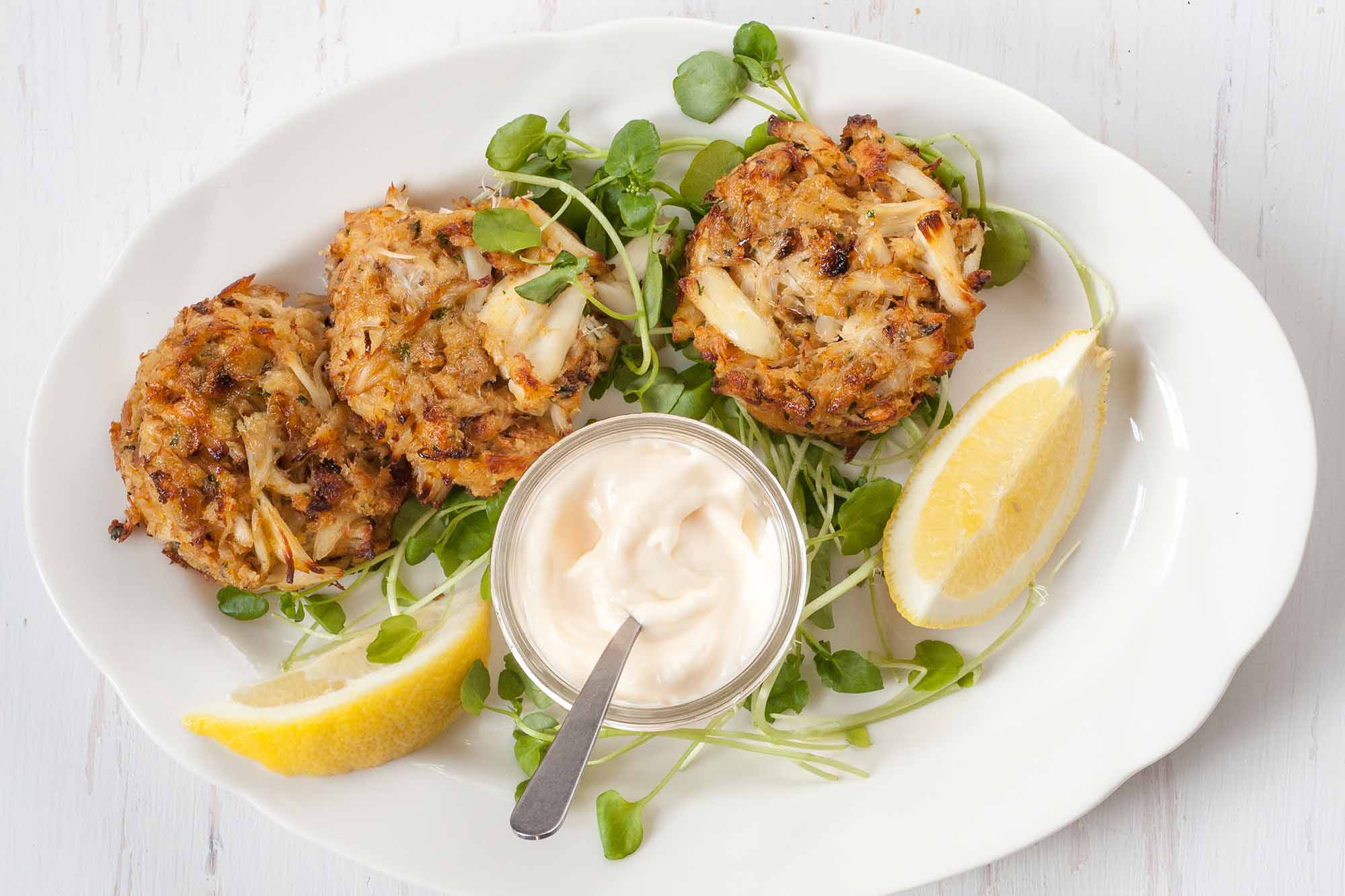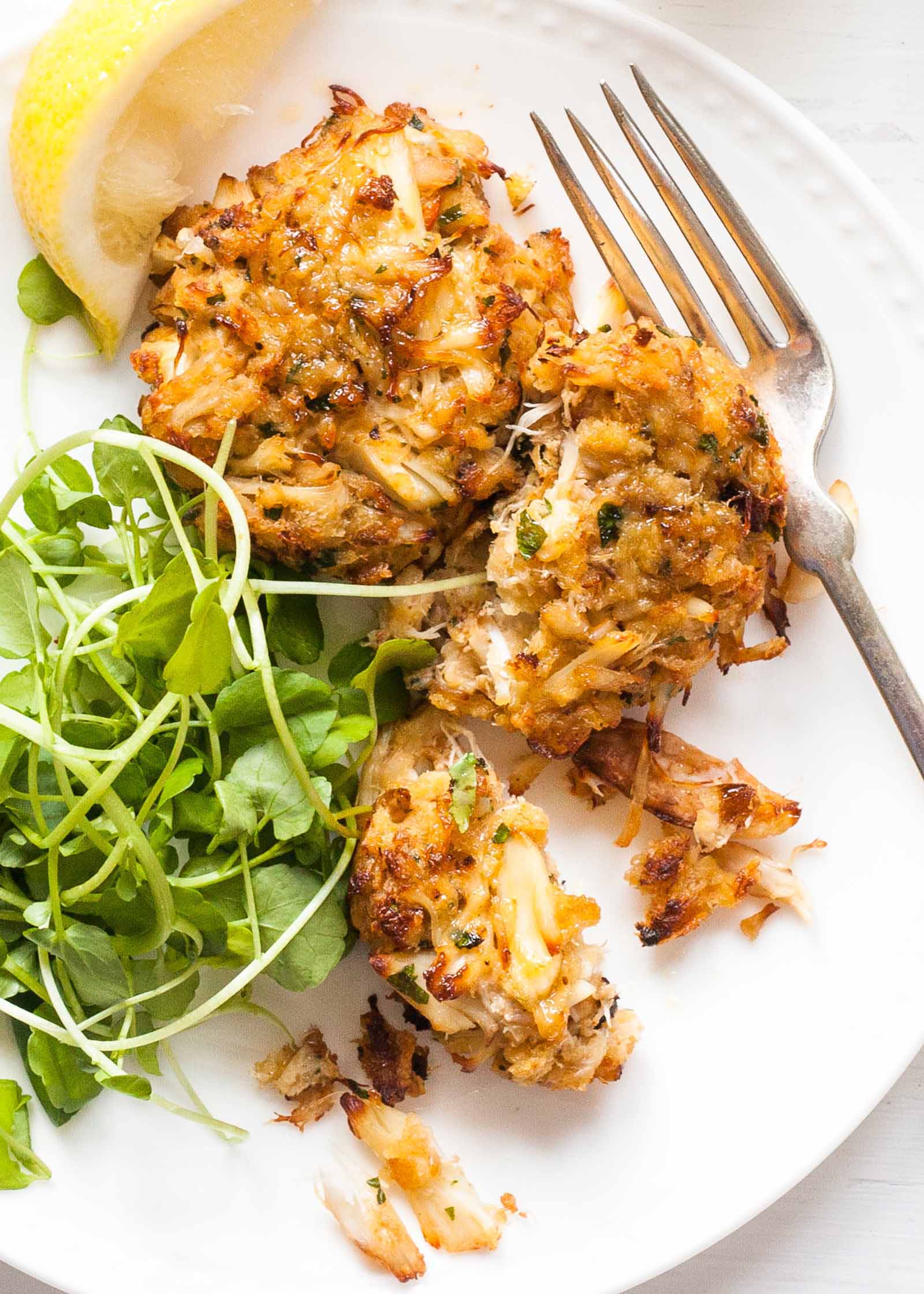Akin to fish cakes, but made with the sweet meat of crab, crab cakes are associated with Maryland, where blue crabs are abundant in the Chesapeake Bay. Their popularity has spread so you no longer need to go to Maryland’s Eastern Shore to enjoy them.
Traditionally, they are made with crabmeat, cracker crumbs, mayonnaise, and a few spices. Nothing fancy. Everything delicious.
In fact, their simplicity is their charm. They’re old-fashioned and down-home, and each ingredient, though straightforward, plays an important role.
HOW TO SELECT CRAB MEAT FOR CRAB CAKES
Crabmeat is almost always sold in cans or containers rather than fresh. The meat is cooked, cleaned, and pasteurized.
Common Kinds of Crab:
- Jumbo Lump: delicate flavor, white color.
- Lump: smaller or broken pieces of the jumbo lump meat. Again, white color and delicate flavor.
- Backfin: commonly used in crab cakes, similar to lump meat, but finer in texture.
- Claw Meat: pink or brown, fishier tasting, small pieces from the fins and claws.
The best meat for crab cakes is lump or back fin. Lump and back fin meat are more affordable than the jumbo lump meat. When it comes to flavor I prefer it over the claw meat. If you happen to have fresh crabmeat that you cooked yourself from king crab legs, you could also use that.
Although it is less expensive, I do not recommend artificial crabmeat. It is often made from white fish (such as pollock) ground into a paste, plus other things like starch, sugar, egg whites, and crab flavoring. There is a lot less protein and no actual crabmeat in artificial crab.

CRAB CAKE FILLERS AND SEASONINGS
The fewer fillers (such as breadcrumbs and crackers) the better when it comes to crab cakes. While saltines are the traditional Maryland binding ingredient, I use homemade sourdough breadcrumbs for their excellent flavor and good binding ability with eggs and mayonnaise.
Note that once you mix the cakes, the filling needs at least thirty minutes in the fridge so the binder can be absorbed and the cakes hold together when you cook them.
Seasonings such as mustard, Worcestershire, lemon juice and zest, and Old Bay Spice are key to making a tasty cake. You should be able to find Old Bay Spice in most supermarkets, but if you can’t, combine a pinch of each of celery salt, paprika, cayenne and black pepper, mustard powder and nutmeg for an Old Bay copy cat.
Old Bay is worth having around to spice up deviled eggs or popcorn, or sprinkle on fish before baking, or use it to make a Bloody Mary to go with your crab cakes!
MAKE AHEAD TIPS FOR CRAB CAKES
Since the crabmeat is already cooked, you could make these up to 2 days ahead and refrigerate them before cooking, or cook them, refrigerate for up to two days, and reheat in the oven.
They can also be frozen, cooked or uncooked.
- To freeze: Place them on a plastic-wrapped lined tray in the freezer, and when they are firm (two to three hours), wrap each one in plastic to avoid freezer burn, and transfer to a heavy-duty plastic bag.
- To reheat: Preheat the oven to 350ºF. Take the cakes from the freezer straight to a parchment or foil-lined baking sheet. Brush with olive oil and bake from frozen for about 25 minutes, until browned and hot all the way through.

MAKE CRAB CAKES A MEAL
Crab cakes are good served with a dollop of mayonnaise or tartar sauce, or even cocktail sauce or other spicy mayonnaise. Place them on a bed of salad greens, on a bun, or serve them with the traditional coleslaw side dish. A cold beer or Spicy Bloody Maria wouldn’t be out of order, either!